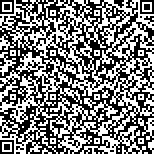| 本文已被:浏览 1185次 下载 727次 |

码上扫一扫! |
| 现代战争爆炸伤特点系统评价 |
| 胡鹏伟1,张磊1,解宏伟1,杨晨2,秦宇迪3,陈福兴4,常旺4,陈国良5,刘晓荣4* |
|
|
(1. 武警后勤学院卫生勤务学系卫生勤务学教研室, 天津 300300;
2. 武警后勤学院基础部政治工作教研室, 天津 300300;
3. 武警后勤学院服务保障中心, 天津 300300;
4. 海军军医大学(第二军医大学)卫生勤务学系卫生勤务学教研室, 上海 200433;
5. 海军军医大学(第二军医大学)海军医学系海军卫勤与装备教研室, 上海 200433
*通信作者) |
|
| 摘要: |
| 目的 分析现代战争中爆炸伤的发生率、致死率、类型和特点,为我军制订高效战伤救治措施及建立战伤数据库提供参考。方法 根据《系统评价和荟萃分析的优先报告条目》规范构建检索策略、文献纳入标准,对所有关于现代战争爆炸伤发生率、伤情特点、致伤机制及特殊战伤的文献进行检索。结果 最终纳入分析的文献共31篇,包括32 474例爆炸伤伤员数据。纳入分析的爆炸伤伤员数据主要来自持久自由军事行动、伊拉克自由行动(包括新黎明行动)、美军“科尔号”驱逐舰遇袭事件和克罗地亚军事冲突中的美军伤员数据。在致伤部位分布中,头面颈部爆炸伤占15.8%~89.5%,躯干爆炸伤占1.8%~80.8%,四肢爆炸伤占45.2%~96.6%,未特指受伤部位的烧伤和血管损伤占15.4%~70.6%。针对不同致伤机制进行分析,非密闭空间爆炸所导致的冲击伤和穿透伤占主要部分,而密闭空间爆炸如舰艇舱室内爆炸所致损伤以烧伤为主。通过对损伤严重程度进行分析,固定爆炸装置造成的损伤严重程度最高,需要配置大量损伤控制和手术复苏力量。结论 绝大多数的伤员数据来自美军成熟的伤员数据库,这些数据库为创伤流行病学研究提供了数据基础。我军应尽快建立战伤数据库,为战伤救治指南制订、防护装备改进、综合卫勤保障提供基础数据。 |
| 关键词: 爆炸 战争相关性损伤 现代战争 卫生勤务学 战伤救治 |
| DOI:10.16781/j.0258-879x.2021.06.0681 |
| 投稿时间:2020-02-14修订日期:2020-06-11 |
| 基金项目:军队后勤科研重大项目. |
|
| Characteristics of blast injuries in modern warfare: a systematic review |
| HU Peng-wei1,ZHANG Lei1,XIE Hong-wei1,YANG Chen2,QIN Yu-di3,CHEN Fu-xing4,CHANG Wang4,CHEN Guo-liang5,LIU Xiao-rong4* |
(1. Department of Health Services, Faculty of Health Services, Logistics College of Chinese People's Armed Police Force, Tianjin 300300, China;
2. Department of Politics, College of Basic Sciences, Logistics College of Chinese People's Armed Police Force, Tianjin 300300, China;
3. Service Center, Logistics College of Chinese People's Armed Police Force, Tianjin 300300, China;
4. Department of Health Services, Faculty of Health Services, Naval Medical University (Second Military Medical University), Shanghai 200433, China;
5. Department of Naval Health Service and Medical Equipment, Faculty of Naval Medicine, Naval Medical University (Second Military Medical University), Shanghai 200433, China
*Corresponding author) |
| Abstract: |
| Objective To analyze the incidence, fatality, types and characteristics of blast injuries in modern warfare, so as to provide reference for developing effective treatment measures on battle field and for establishing war wound database. Methods Retrieval strategy and literature inclusion criteria were obtained according to preferred reporting items for systematic reviews and meta-analyses (PRISMA), and all the literatures on the incidences, characteristics, mechanisms and special injury conditions of blast injuries were retrieved. Results A total of 31 articles were included in the analyses, consisting of 32 474 blast injury casualties of US army during Operation Enduring Freedom, Operation Iraqi Freedom (including Operation New Dawn), the Cole attack incident and the combat conflict in Croatia. The incidence of blast injuries was 15.8%-89.5% on the head, face and neck, 1.8%-80.8% on the trunk, 45.2%-96.6% on the limb, and 15.4%-70.6% on other parts. According to the analyses of different injury mechanisms, impact injuries and penetrating injuries caused by explosions in open spaces accounted for the main part, while burns were the main injuries caused by explosions in closed spaces such as explosions in ship cabin. The most severe blast injuries was caused by fixed explosive device, and strong injury control and surgical resuscitation forces should be deployed. Conclusion Most of the casualty data are from the mature war wound database of the US army, which provides the data basis for trauma epidemiology research. A war wound database of PLA should be established as soon as possible to provide basic data for developing war wound treatment guidelines and improving protective equipment and comprehensive medical support. |
| Key words: blast war-related injuries modern warfare health service treatment of war wounds |
.jpg)
.jpg)